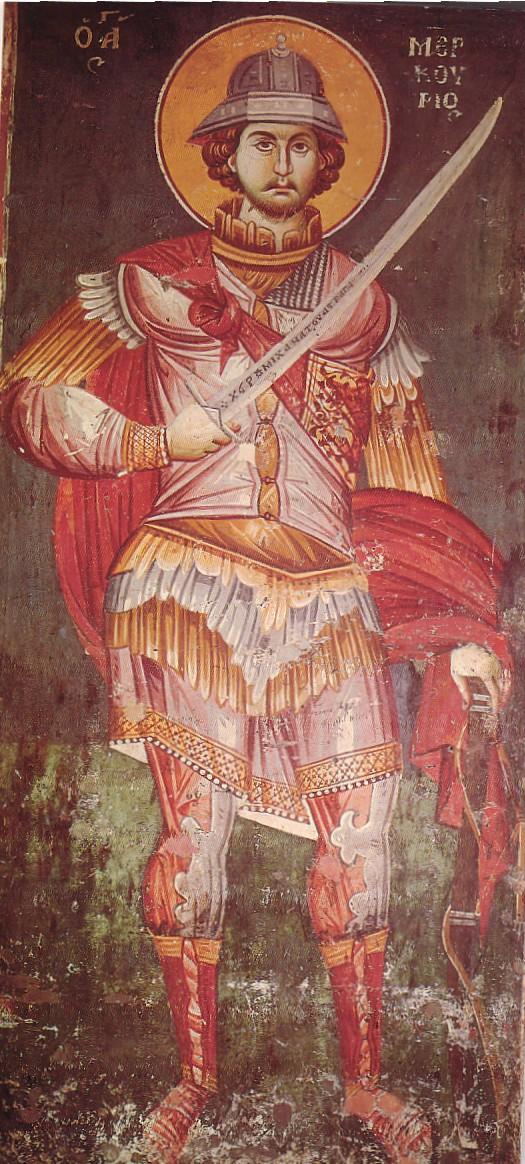paramerion on:
[Wikipedia]
[Google]
[Amazon]
 The paramerion (
The paramerion (
Medieval Greek
Medieval Greek (also known as Middle Greek, Byzantine Greek, or Romaic) is the stage of the Greek language between the end of classical antiquity in the 5thŌĆō6th centuries and the end of the Middle Ages, conventionally dated to the Ottoman co ...
: ╬Ā╬▒Žü╬▒╬╝╬«Žü╬╣╬┐╬Į) was a saber
A sabre ( French: łsab╩ü or saber in American English) is a type of backsword with a curved blade associated with the light cavalry of the early modern and Napoleonic periods. Originally associated with Central European cavalry such as th ...
-like curved sword
A sword is an edged, bladed weapon intended for manual cutting or thrusting. Its blade, longer than a knife or dagger, is attached to a hilt and can be straight or curved. A thrusting sword tends to have a straighter blade with a pointed ti ...
used by the Byzantine
The Byzantine Empire, also referred to as the Eastern Roman Empire or Byzantium, was the continuation of the Roman Empire primarily in its eastern provinces during Late Antiquity and the Middle Ages, when its capital city was Constantinopl ...
military
A military, also known collectively as armed forces, is a heavily armed, highly organized force primarily intended for warfare. It is typically authorized and maintained by a sovereign state, with its members identifiable by their distinct ...
. The one-edged cutting weapon was primarily used by Byzantine cavalry and took inspiration from similar swords of the Middle East. Other scholars consider that it was directly influenced by the sabres
A sabre is a type of sword.
Sabre, Sabres, saber, or SABRE may also refer to:
Weapons and weapon systems
* Sabre (fencing), a sporting sword
* Sabre (tank), a modern British armoured reconnaissance vehicle
* Chinese sabre or ''dao'', a variety ...
used by Turkic steppe peoples, such as the Pechenegs
The Pechenegs () or Patzinaks tr, Pe├¦enek(ler), Middle Turkic: , ro, Pecenegi, russian: ą¤ąĄč湥ąĮąĄą│(ąĖ), uk, ą¤ąĄč湥ąĮč¢ą│(ąĖ), hu, Beseny┼æ(k), gr, ╬Ā╬▒Žä╬Č╬╣╬Į╬¼╬║╬┐╬╣, ╬Ā╬ĄŽäŽā╬Ą╬Į╬Ł╬│╬┐╬╣, ╬Ā╬▒Žä╬Č╬╣╬Į╬▒╬║╬»Žä╬▒╬╣, ka, ßā×ßāÉßā ...
and Cumans
The Cumans (or Kumans), also known as Polovtsians or Polovtsy (plural only, from the Russian language, Russian Exonym and endonym, exonym ), were a Turkic people, Turkic nomadic people comprising the western branch of the CumanŌĆōKipchak confede ...
, that the Byzantines employed as mercenaries or who served in the Byzantine army. The name ''paramerion'' means 'by the thigh', this may reflect that it was worn suspended by slings from a waist-belt, rather than the usual baldric
A baldric (also baldrick, bawdrick, bauldrick as well as other rare or obsolete variations) is a belt worn over one shoulder that is typically used to carry a weapon (usually a sword) or other implement such as a bugle or drum. The word ma ...
employed by Byzantines for straight double-edged swords.Dawson, Timothy (2007) ''Byzantine Infantryman, Eastern Roman Empire c.900ŌĆō1204'', Osprey, Oxford , , p. 25.
References
Byzantine military equipment Ancient swords {{Byzantine-stub